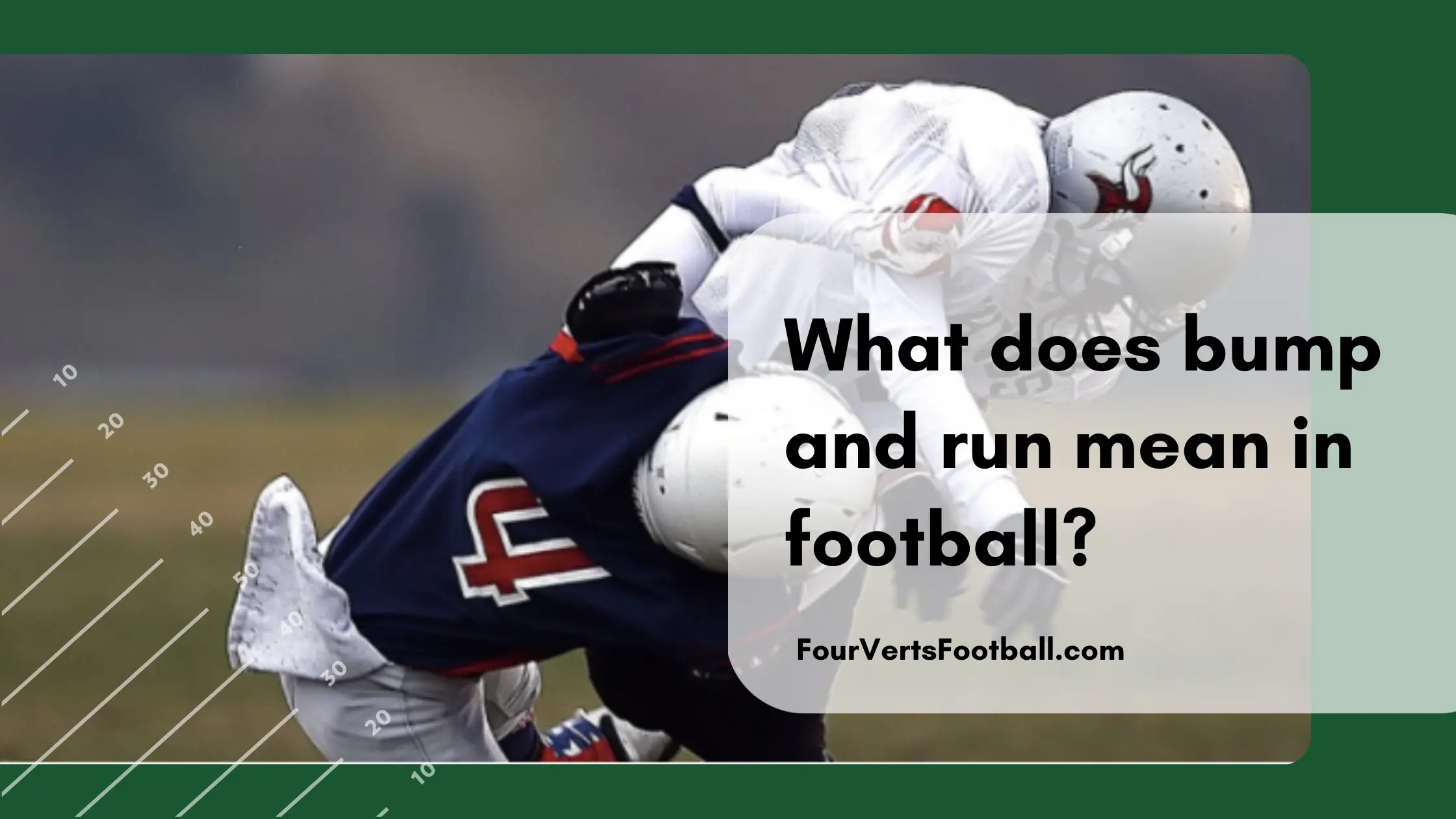In football the term bump and run refers to a style of pass defense which involves bumping the opposing receiver at the line of scrimmage and then running with them throughout the play.
And yes before you ask it is entirely legal to make contact with a receiver before he catches the ball.
The only stipulation is that this contact must come within five yards of the line of scrimmage. In other words if you are going to make contact you will have to do it at the start of the play.
The contact allowed in bump and run coverage is fairly vague. This is what the NFL rulebook has to say about the matter.
ARTICLE 1. LEGAL CONTACT WITHIN FIVE YARDS
Within the area five yards beyond the line of scrimmage, a defensive player may chuck an eligible receiver in front of him. The defender is allowed to maintain continuous and unbroken contact within the five-yard zone, so long as the receiver has not moved beyond a point that is even with the defender. – NFL Rulebook
This rule clearly states that is legal to “chuck” an eligible receiver in front of him. From this it can be assumed that you can shove or block the wide receiver. So long as he is in front of you.
Since bump and run coverage only intends to bump the receiver at the beginning of the play it is therefore entirely legal.
Advantages Of This Coverage
Bump and run coverage has become a favourite of many cornerbacks and for good reason, it works. Let’s get into some of the things that make this coverage successful.
Timing
One of the biggest benefits of using bump and run coverage is that you can throw off the timing of the play. Receiver routes are a science and the quarterback knows the exact number of seconds it should take a receiver to get to the target area.
When making contact with the receiver you are then able to throw off his timing. By doing this the quarterback will not find him at the location he expects.
This makes it more difficult for the quarterback to find his receiver and may allow your defensive line more time to rush the passer.
Countering Speed
Another great benefit of bump and run coverage is that it can counter out speed receivers. Smaller shifty receivers are notoriously hard to cover. Though, it is much easier if you do not let them get going.
By getting physical with a speed receiver at the line of scrimmage you will take away his ability to take his first few steps. These first few steps generate a lot of speed for the receiver. And by taking them out you greatly limit his ability.
You will also find the bump and run technique will be more effective on speed receivers due to their smaller stature.
Disadvantages
No cushion
One aspect that makes bump and run style of coverage risky is the lack of a cushion. A cushion in football refers to the extra space allowed between a receiver and a cornerback to start a play. The cushion allows the corner to be more prepared for deep routes.
Without this cushion, you will find it much more difficult to not allow the receiver to get past you. Cushions are especially helpful when facing receivers with elite speed. Most corners cannot match the fastest receivers in the league when running in a straight line. This makes the cushion very important.
Level Of Risk
The other issue behind this sort of coverage is the risk involved. At the end of the day, most coverage styles don’t require you to move towards the receiver.
The “bump” portion of this coverage has inherent risk as a receiver may be able to beat you before the contact is made. If you happen to miss when you attempt to bump the receiver you are going to get beat over the top.
Who Created It?
The bump and run coverage style was created by Willie Brown. Brown’s coverage method was so effective it led him to a hall of fame career.
Brown played a total of sixteen years in the NFL and was signed as an undrafted free agent in 1963.
That is all on this coverage style, learn about other styles aside from bump and run such as man to man style of coverage or zone pass coverage.

